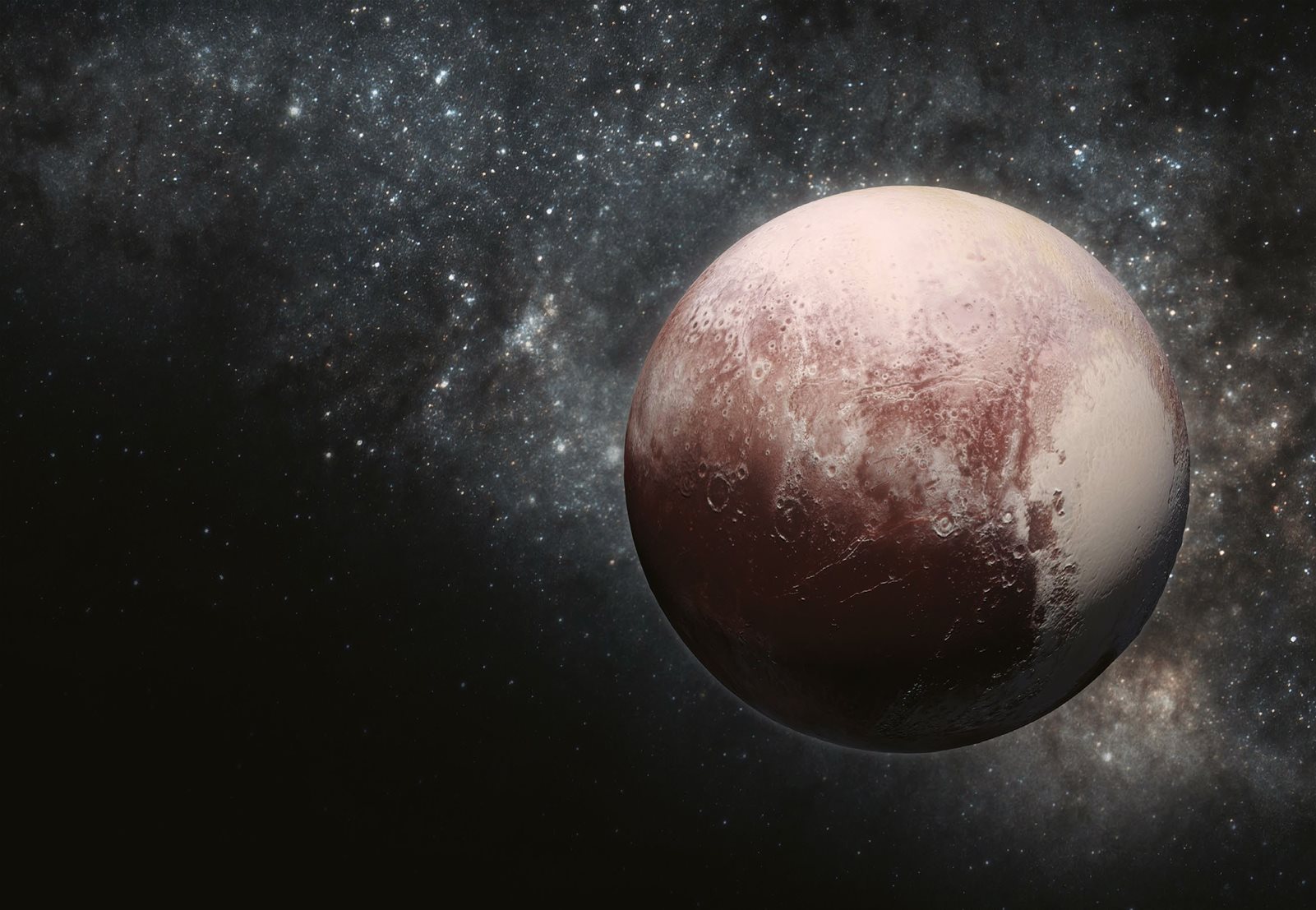
Pluto illustration incorporating NASA New Horizons terrain imagery
© Getty
NASA’s New Horizons spacecraft will be able to keep exploring its exotic environs for at least another five years. The space agency announced on 29 September that it will keep New Horizons’ lights on while it’s still zooming through the Kuiper Belt, the expansive ring of icy bodies beyond Neptune’s orbit. “The New Horizons mission has a unique position in our Solar System to answer important questions about our heliosphere and provide extraordinary opportunities for multidisciplinary science for NASA and the scientific community,” Nicola Fox, associate administrator for NASA’s Science Mission Directorate in Washington, said. The heliosphere is the big bubble of magnetic fields and charged particles that the Sun blows around itself. Beyond it lies interstellar space. “The agency decided that it was best to extend operations for New Horizons until the spacecraft exits the Kuiper Belt, which is expected in 2028 through 2029,” Fox added. The New Horizons spacecraft launched in January 2006 on a long-duration mission to provide the first-ever up-close look at Pluto, the Kuiper Belt’s most famous resident and former planet. The spacecraft delivered, zooming past the dwarf planet in July 2015 and revealing a world of stunning diversity and beauty. And the probe kept cruising along on an extended mission that centred on a flyby of another Kuiper Belt object (KBO) – the 34-kilometre (21-mile) wide Arrokoth. That encounter went swimmingly as well, returning great imagery and intriguing science. For example, New Horizons’ observations suggest that Arrokoth formed via a very gentle merger of two smaller objects.
But the mission’s future became murky this year. NASA extended New Horizons’ mission through 2024, but proposed a big shift after that – a move to the heliophysics division from planetary science. New Horizons’ principal investigator, Alan Stern, objected to this idea, arguing that the best scientific return would come from staying the course, allowing the probe to continue studying the little-explored Kuiper Belt. The mission extension appears to be a compromise of sorts. It will be funded primarily by planetary science but jointly managed by that division and heliophysics.